Today, the Blackfeet Indian Reservation occupies the beautiful, rolling hills that extend off the eastern slopes of Glacier National Park, including part of Chief Mountain, an unmistakable and stunning peak on the western edge of the reservation that is sacred to the tribe.
It’s a core piece of the tribe’s ancestral lands, where they once practiced their annual rituals, such as the summer Sun Dance, and followed the bison herds.
Discover this enchanting part of Montana in this article on the Blackfeet Indian Reservation. Get a brief history of the tribe, discover what life is like on the reservation today, and find out the 14 best things to do on the Blackfeet Indian reservation as a visitor.
Blackfeet Indian Reservation – Past, present, tourism
- Brief history of the Blackfeet Tribe
- Life on the Blackfeet Indian Reservation today
- 14 best things to do on the Blackfeet Indian Reservation
Brief history
Skim through this brief history of the tribe to get an idea of the tribe’s customs and where they originated from before migrating to present-day Montana.
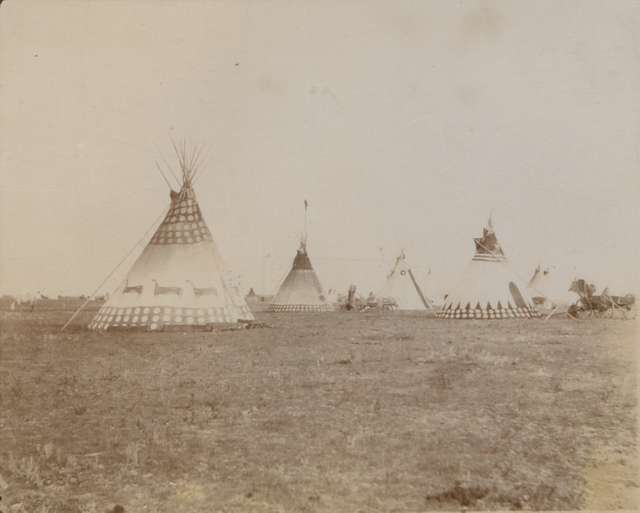
Early days and migration west
The Blackfeet Tribe trace their origins back to territory north of Maine, along the border with Canada. In their early days, they practiced an agricultural-based lifestyle.
Due to increasing pressure from neighboring tribes and encroaching European settlers, they migrated west towards present-day Montana, seeking new territory.
After stopping south of Hudson Bay for some time, they eventually settled in a region that now comprises Montana and the Canadian provinces of Saskatchewan and Alberta. Here, they abandoned their agricultural ways for the nomadic lifestyle of the Plains Indians.
They adopted a nomadic lifestyle, following the bison herds in the summer and setting up stationary camps near river beds during the winter.
Establishing themselves on the Great Plains
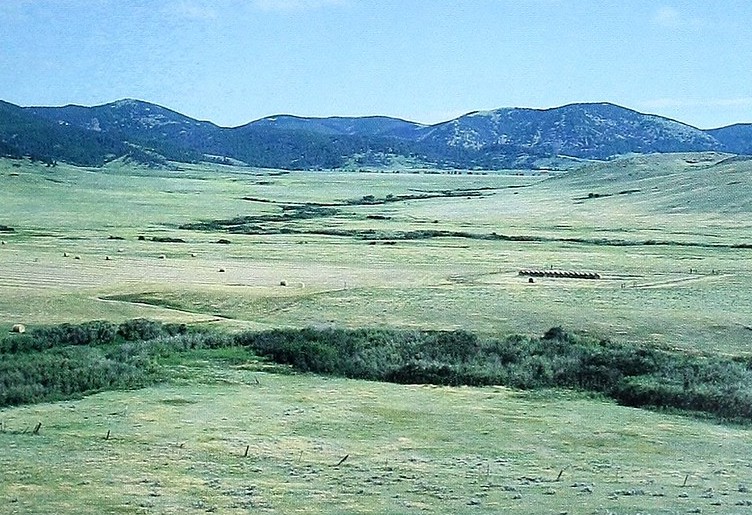
The Blackfeet Tribe consists of three primary bands: the Siksika, Piegan, and Kainai. The Blackfeet tribe living in Montana today is a branch of the Piegan Tribe.
While the Blackfeet Tribe was eventually conquered by European settlers, at their height of power the Blackfeet was one of the largest, most powerful tribes of the Great Plains, striking fear in the hearts of most groups who encountered them.
Prior to colonization, their enormous territory stretched from Edmonton, Alberta, down to Yellowstone National Park, and from Glacier National Park to the Black Hills of South Dakota.
The tribe had many enemies, including the tribes of the Iron Confederacy, but they generally stayed out of the Indian Wars of the 17th, 18th, and 19th centuries, remaining adamantly against warring with the United States or Canadian government.
Creating the Blackfeet Indian Reservation
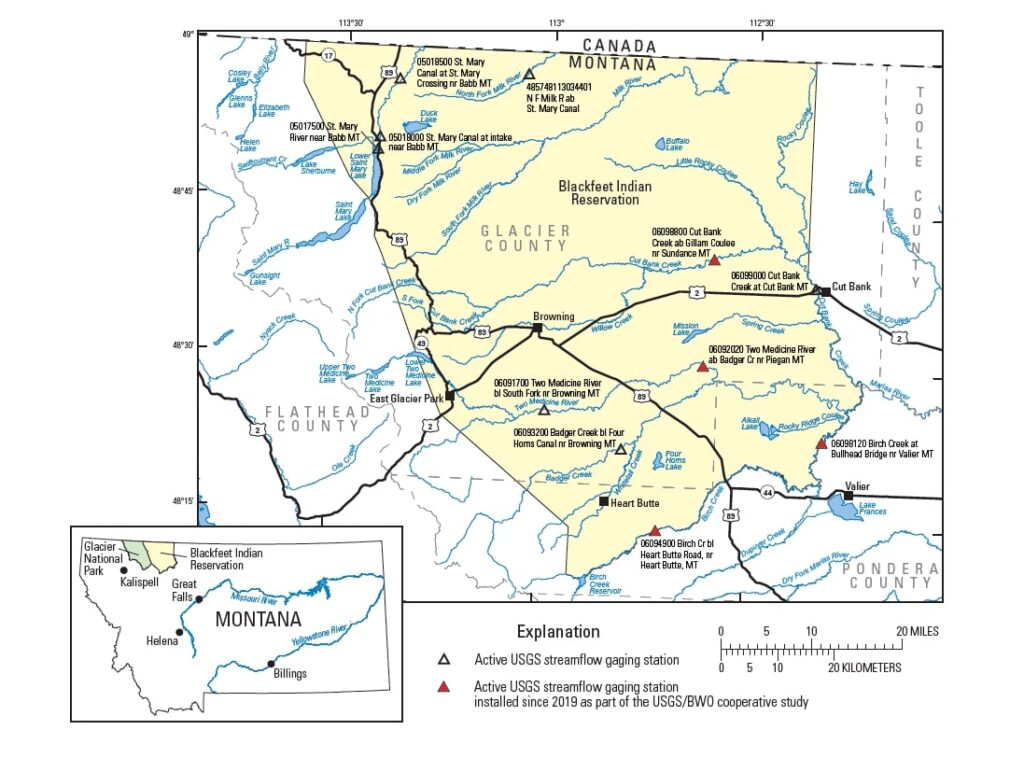
The Blackfeet Tribe shared a similar fate as most other Native American Tribes of the time.
The tribe faced serious hardship throughout the late 1800s as the U.S. government nearly exterminated the entire North American bison population and forced the tribe onto reservations, making them fully dependent upon the government for food and resources. The Lame Bull Treaty pushed the tribe onto a reservation in Montana in 1855.
By 1910, the reservation’s boundaries were drawn for a final time. By then, the U.S. government had violated numerous treaties, taking enormous swaths of tribal land, leaving the tribe with a fraction of what they were allotted in 1855.
The rolling hills east of Glacier National Park have been a part of the tribe’s ancestral lands since they first stepped foot on the northern Great Plains of Montana and today they comprise the entirety of the Blackfeet Indian Reservation.
Read the full history of the Blackfeet Tribe in our article, the Storied history of the Blackfeet Tribe [CONDENSED].
Life on the Blackfeet Indian Reservation today

Quick facts
- Size:1,525,712 acres (617,434 ha) or 2,384 miles2 (7,800 km2)
- Number of enrolled members: 15,560
- % of enrolled members that live on the reservation: 45% (7,000)
- Crime rate: High (twice the national average)
- Mountains: Chief Mountain, Ninaki Mountain, and Papoose
- Waterways: 175 miles (282 km) of stream and eight major lakes, including:
- St. Mary River
- Milk River
- Birch Creek
- Two Medicine River
- Cut Bank Creek
- Duck Lake
- Mission Lake
- Four Horns Lake
- Dog Gun Lake
- Forests: The western boundary of the reservation runs along the Lewis and Clark National Forest, which encompasses the Two-Medicine area
- Beauty rating: 8/10
Main towns
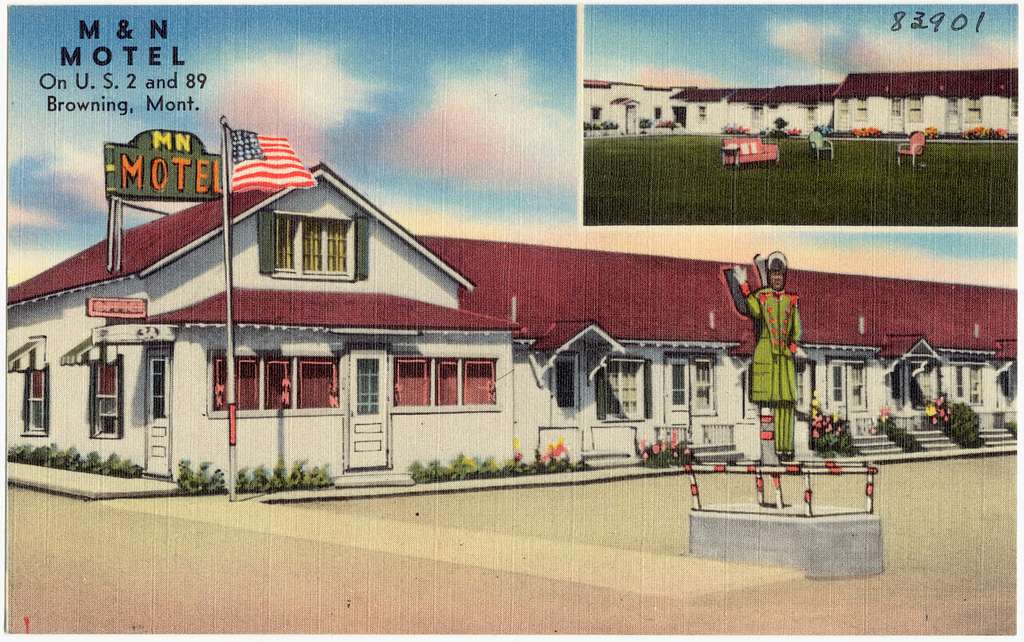
The main town of the reservation is Browning, Montana, which has a population of 1,018 people and is the seat of the tribal government.
Other towns on the Blackfeet Indian Reservation include:
- North Browning (pop. 2,653)
- South Browning (pop. 1,970)
- Babb (pop. 130)
- East Glacier Park Village (near Glacier National Park; pop. 354)
- St. Mary (eastern terminus of the Going-to-the-Sun Road through Glacier National Park; pop. 54)
- Heart Butte (pop. 698)
- Starr School (pop. 252)
Main industries
The main industries on the Blackfeet Indian Reservation include natural gas and petroleum land leases (the largest industry), ranching, farming, and a small lumber industry.
Blackfeet Indian Writing Company
The local lumber industry used to support the renowned Blackfeet Indian Writing Company, a pen and pencil manufacturer located in Browning known for producing unique, high-quality pens and pencils, some of which were the official writing implement of the U.S. Senate.
Their pencils included the “Swagger Stick”, used by the U.S. Senate, and the “Earth Pencil”, which was made entirely of natural products. The Blackfeet Indian Writing Company reached its peak in the 1980s but closed down in the early 2000s due to financial troubles.
Government
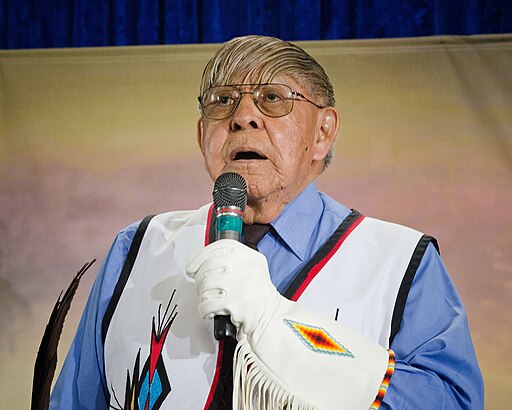
The Blackfeet Nation has a sovereign government run by the Blackfeet Tribal Business Council, which for many years was led by renowned tribal figure and honorary lifetime chief of the Blackfeet Nation, Earl Old Person.
Education
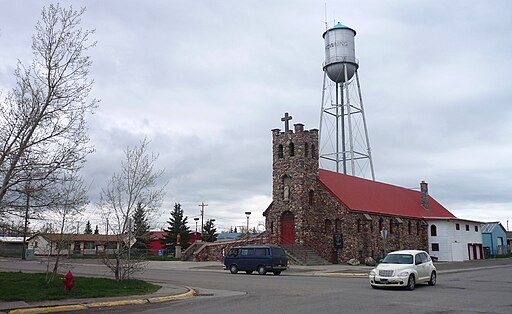
Education on the Blackfeet Indian Reservation consists of a culturally-infused curriculum as well as a standard, contemporary curriculum. However, some private schools offer education with fewer limits on the extent of the cultural teachings, which involve prayer and other rituals that are forbidden in public schools.
The freedom to practice their own cultural customs, traditions, and religious practices is a major change from the education system on the reservation in the arly 1900s.
Back then, the U.S. government started imposing major restrictions on the Blackfeet and all other tribes, preventing them from practicing their customs, wearing their traditional dress, or speaking their native language. This repression was a part of the government’s effort to fully assimilate native populations.
Many of the Catholic boarding schools established during this time took native children from their families in an attempt to assimilate them.
However, this systematic repression eventually slowed down around the middle of the 20th century. Despite what the tribe has lost, some catholic schools on the reservation today nurture the native customs, language, and other practices.
In addition to public and private schools, the Blackfeet Reservation is also home to the Blackfeet Community College, located in Browning, which offers associates of arts, sciences, and applied sciences degrees.
14 best things to do on the Blackfeet Indian Reservation
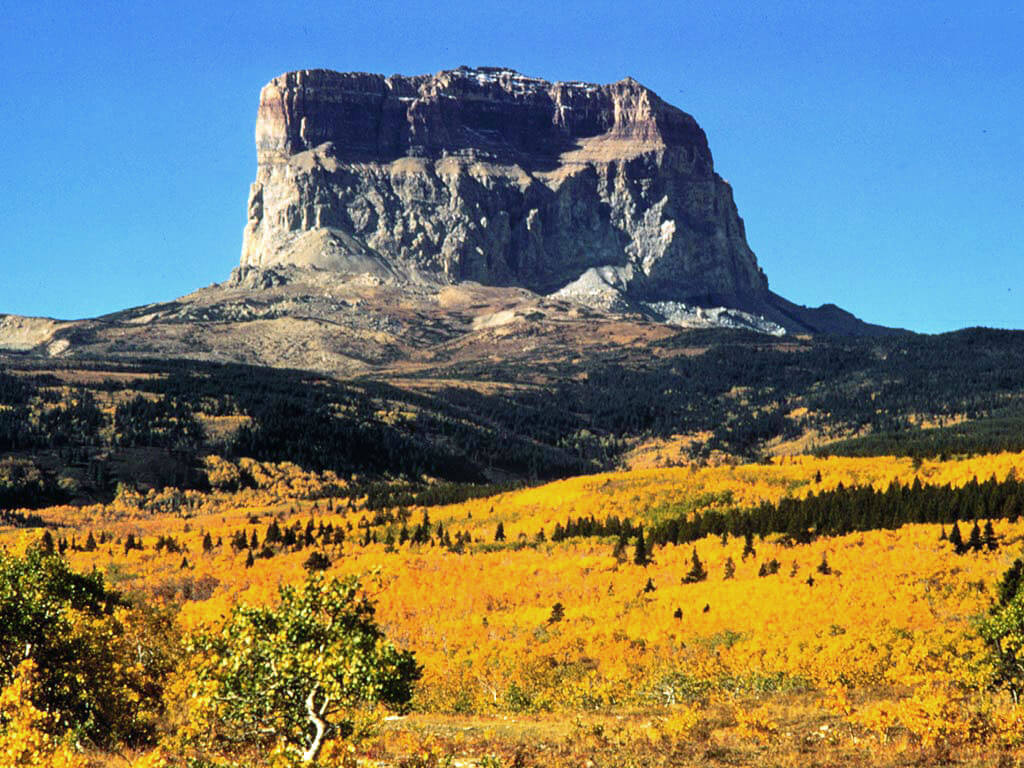
The Blackfeet Indian Reservation gives visitors an authentic glimpse into the culture and traditions of one of the largest Plains Indian Tribes.
The reservation offers visitors a variety of things to see and do, from exploring tribal lands to attending one of the largest annual Native American events in the country.
Here are the top 14 things to do on the Blackfeet Indian Reservation:
1. Attend North American Indian Days
North American Indian Days invites visitors into a personal experience with the Blackfeet Tribe. This annual four-day event, held each year in Browning on the second week of July, is one of the largest annual Native American cultural events in the country.
What’s more, it involves both American and Canadian tribes. At the North American Indian Days celebration, visitors can witness various events that beautifully display the customs of many Native American tribes, including the Blackfeet.
Participants can see dancing, drum contests, a pow-wow, stick games, horse relay races, and a rodeo. Let the native rhythms carry you into a deeper understanding of tribal life.
2. Attend Heart Butte Indian Days
This is another exotic, authentic Native American cultural event. It takes place on the second week of August in Heart Butte, just 26 miles (42 km) from Browning.
Heart Butte features historic houses dating back to 1915, shortly after Glacier National Park was established and the final boundaries of the Blackfeet Indian Reservation were drawn.
This four-day event features dancing, socializing, games, and various other exciting moments. One of the main moments is the Pow Wow, where dancers wear traditional, handmade outfits and sing sacred tribal songs.
Visitors are reminded to abide by proper etiquette. If you see other people standing or removing their hats, simply follow along and you’ll be sure to avoid any unintentional faux pas.
3. Stop in the Native Life Store in Browning
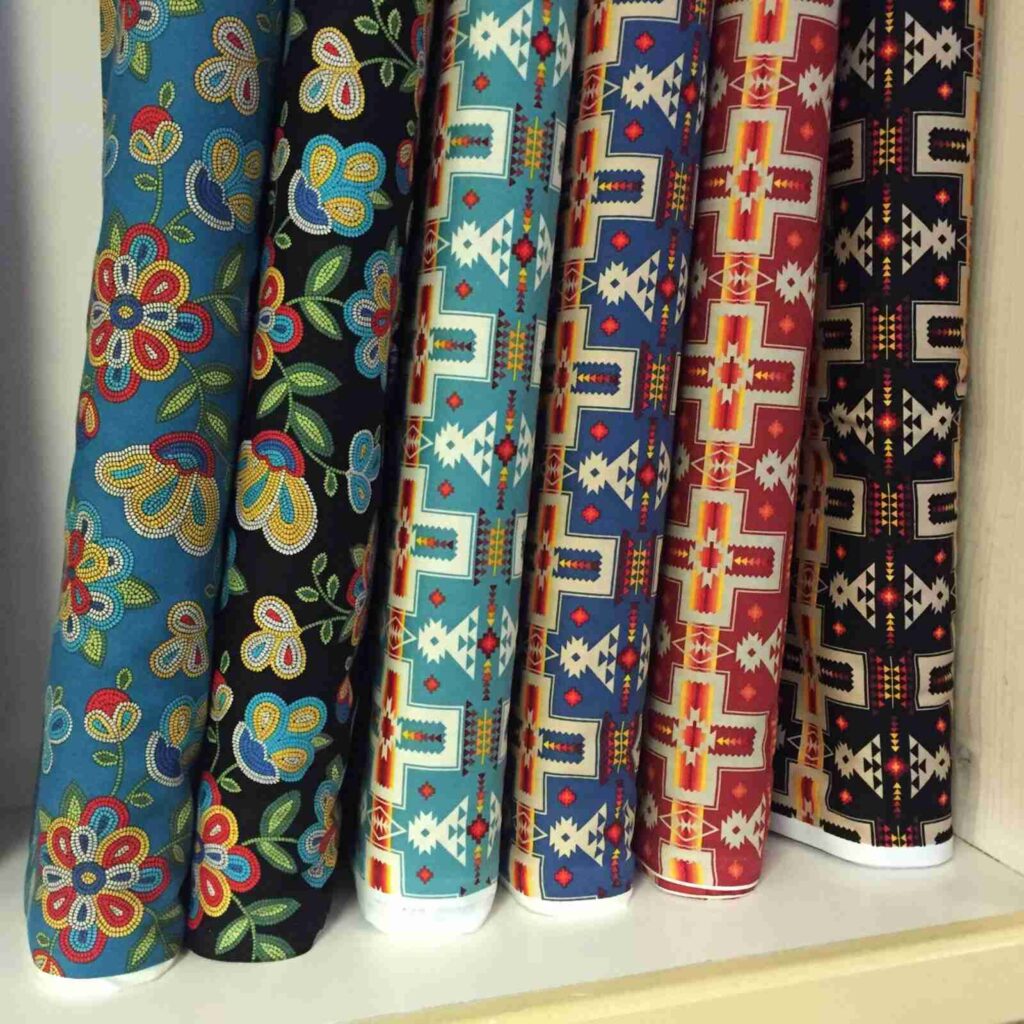
The slogan of this traditional western store reads, “Where Indian summer meets cowboy Christmas”. This should give you a good idea of what kind of fun things you’ll find here.
The Native Life Store in Browning offers various assortments of fabric and necessities for quilting and sewing, including completed quilts and various gifts, such as jewelry, jams, leather, and beadwork.
If you are fascinated by Native American and Cowboy culture and you happen to be a quilter, the Native Life Store is for you.
4. Stay at Bison Creek Ranch
The Bison Creek Ranch is an ideal place to experience the wonderful scenery of the reservation along the edge of Glacier National Park. This establishment is located on Highway 2 between East Glacier Park and the south boundary of Glacier National Park.
The ranch is a perfect stop-off for people traveling along Highway 2 across the reservation to West Glacier. Guests enjoy various accommodation options and things to do nearby, including A-Frames, cabins, a lodge, and what they call “The People’s Market”.
The nearby town of East Glacier Park offers numerous breakfast, lunch, and dinner options as well as grocery stores and Glacier National Park Gift shops. After a day of exploring, revel in the opportunity to watch the sunset over Glacier National Park – a truly enchanting experience.
5. Drive up to Chief Mountain
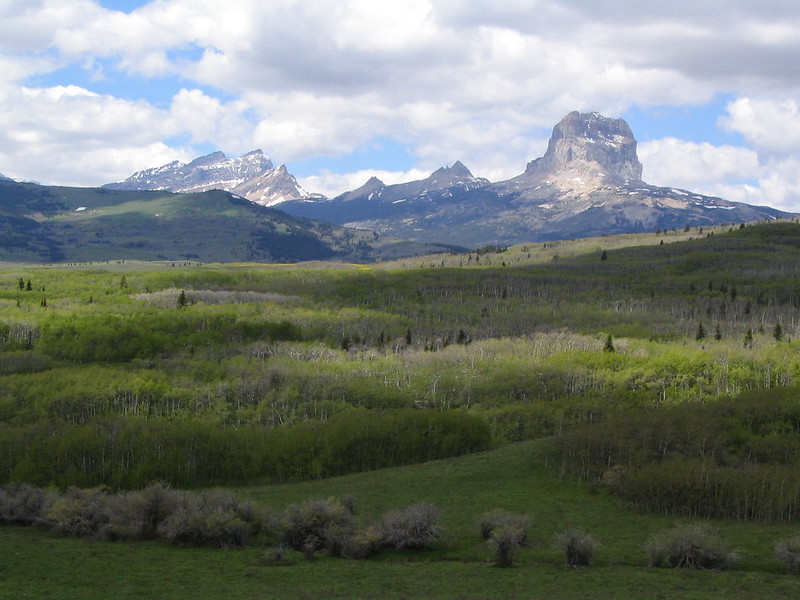
Chief Mountain is as beautiful as it is sacred to the local Native Tribes that call this region home.
Chief Mountain is clearly visible along Chief Mountain Highway, and numerous pullouts along the way offer great photo opportunities, especially when you reach the northern side.
If you are an experienced climber and mountaineer, you may partake in the pleasant, but challenging route to the top of Chief Mountain. The route involves bouldering, “scree”, and numerous difficult sections, not to mention a very slim top section. Permits are required to hike the mountain.
For most visitors, the drive along Chief Mountain Highway is more than enough as it offers absolutely majestic views of the unmistakable peak, surrounding peaks, and the forested hills that lay before them.
6. Visit Duck Lake
Duck Lake is a beautiful big lake just east of Babb off Highway 464. Sitting at the foothills of Glacier National Park’s Lewis Range, the campgrounds and cabin rentals located around the lake feature splendid views, especially when the sun is setting over the mountain tops.
Duck Lake is ideal for canoes, kayaks, and swimming. It’s also especially popular for fishing. You need both a reservation and a state license to fish the lake.
7. Explore tribal lands
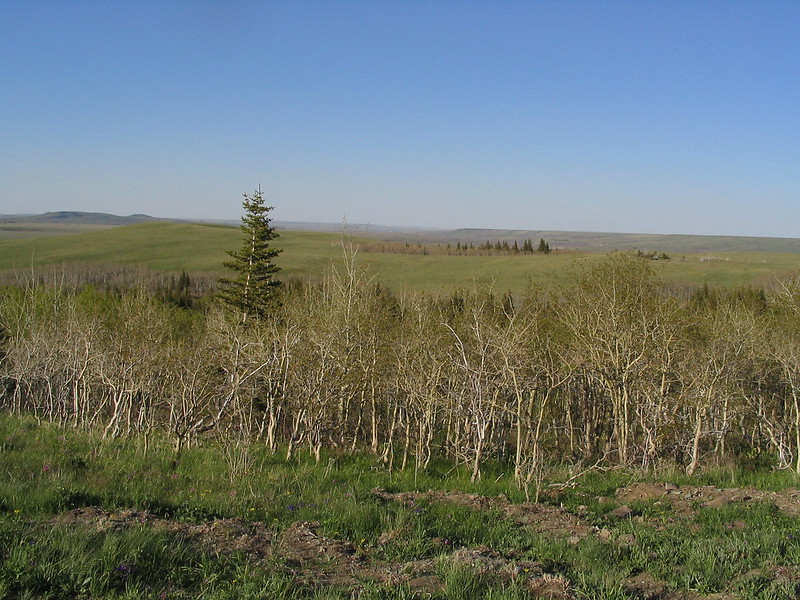
Being that the Blackfeet Indian Reservation lies in some of Montana’s most beautiful terrain, many people who visit enjoy getting out to any of the many lakes, rivers, and beautiful areas of rolling hills.
The main lakes include Duck Lake, Mission Lake, Four Horns Lake, and Dog Gun Lake, all of which vary in size and offer splendid views. Local rivers include the St. Mary River, Milk River, Birch Creek, Two Medicine River, and Cut Bank Creek.
Be sure you are up on the tribal recreation regulations and ensure you have the proper permits and understand key rules, such as which wood can be collected for firewood, before heading out.
8. Visit Lower St Mary Lake
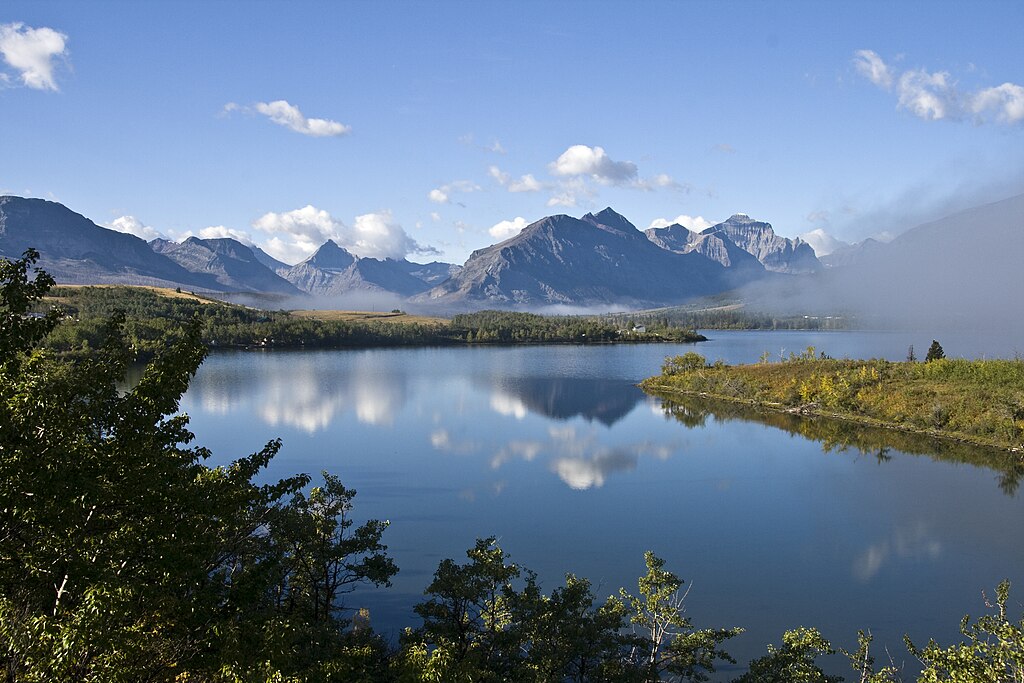
Lower St Mary Lake is a large, beautiful lake located at the foothills of the Lewis Range of Glacier National Park. Like much of this western region of the reservation, the Lewis Range serves as the dramatic and beautiful backdrop.
Lower St Mary Lake is the “sister” lake to Upper St Mary Lake, the latter of which is located in Glacier National Park. The upper lake drains down into the lower lake, which sits between St Mary and Babb along Highway 89.
Divide Creek Campground is a popular campground on the St Mary River, located just above Lower St Mary Lake. The campground is an ideal stop at the eastern terminus of Going-to-the-Sun Road, offering cabins, tent spaces, and RV pitches.
9. Stop in Faught’s Blackfeet Trading Post
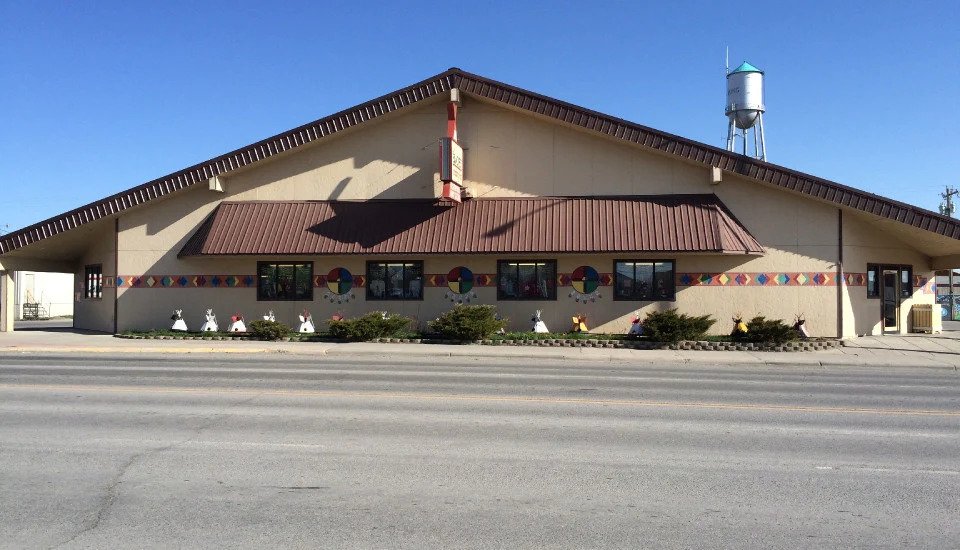
Faught’s Blackfeet Trading Post has been around since 1946. They sell a variety of Western and Native American-themed clothing and souvenirs, including books, lotions, beading supplies, crafts, and various other interesting items.
If you’re in Browning, we highly recommend stopping in for a visit. The store is large and offers a wide selection of goods.
10. Visit the Blackfeet Heritage Center & Art Gallery
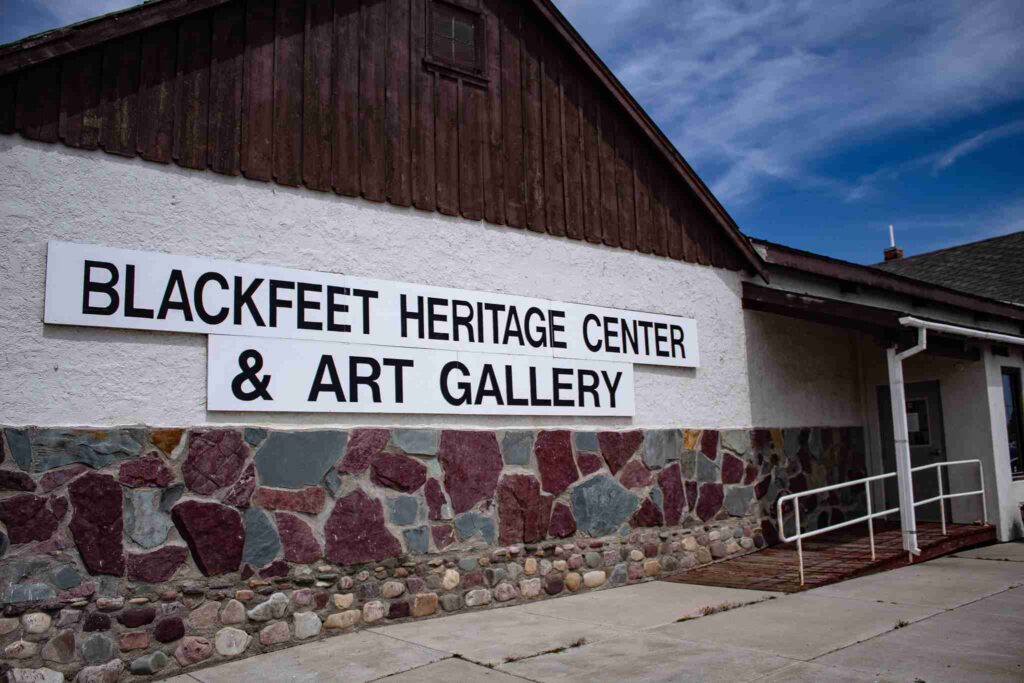
The Blackfeet Heritage Center & Art Gallery is one of the best places on the Blackfeet Indian Reservation to browse authentic art from Native American tribe members, some of which is for sale.
The artwork on display includes everything from paintings and sculptures to drums, pottery, beadwork, and literature from more than 500 artists across 16 different tribes.
If you’re passionate about art or even slightly curious about Native American art, we highly recommend you stop in the Blackfeet Heritage Center in Browning while visiting the Blackfeet Reservation.
11. Stay and explore at the Lodgepole Gallery & Tipi Village

Are you looking for a place located in one of the most beautiful regions of the Blackfeet Indian Reservation where you can spend the night and enjoy immersive Blackfeet cultural experiences? If so, then the Lodgepole Gallery, also known as the Blackfeet Culture Camp, is just for you.
The Lodgepole Gallery sits on a 200-acre (81-ha) plot of land with a spring-fed lake 2.5 miles (4 km) west of Browning at the foothills of the Rocky Mountains.
While they used to offer accommodation in tipis, now they offer cabin rentals. Stay the night and relish in the peaceful, serene atmosphere of the property and immerse yourself in the life of the Blackfeet Tribe by day.
Guests can partake in the Blackfeet history tour, where native culture and history come to life. The tour takes you on a journey to a bygone era, visiting buffalo jumps, tipi rings, and a pow-wow.
You can also do some Horseback riding on the historic trails of the Blackfeet Tribe and enjoy hikes to pristine streams that offer exceptional fishing opportunities. In the evening, guests have the opportunity to hear stories from Native American Tribes.
Guests can also browse contemporary and traditional Blackfeet art and beadwork at the onsite gallery.
12. Visit the Museum of the Plains Indian

The Museum of the Plains Indian is a hidden gem located in Browning. This museum is one of the best places to learn about the lifestyle and customs of the Plains Indians.
The exhibit highlights are the traditional horse gear, historic clothing, household items, baby carriers, and toys.
The museum also features sales exhibitions that introduce the public to contemporary Native American art and crafts from emerging artists, as well as an on-site gift shop.
The exhibits in the museum represent many Plains Indian Tribes, including the Blackfeet, Flathead, Sioux, Crow, Northern Cheyenne, Chippewa, Arapaho, Assiniboine, Nez Perce, Shoshone, and Cree.
13. Stop in Western Curios
Western Curios is a mainstay gift shop of Browning. If you’re in the area, we recommend you stop in for some exciting souvenir shopping.
Here you’ll find numerous Blackfeet and Glacier National Park-themed souvenirs, jewelry, local crafts, and quintessential “Made in Montana” items, such as huckleberry jam, as well as breads and spices.
Though it has bad reviews from a couple of people on Google, the wide selection of souvenirs is worth having a look at if you’re in town.
14. Take a scenic drive
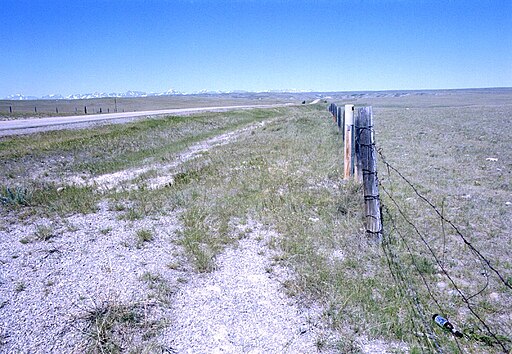
You don’t have to go far to find a beautiful scenic drive through the Blackfeet Indian Reservation.
Highway 2. Simply continue on from Browning to East Glacier on Highway 2. This beautiful drive is easily accessible as Highway 2 is a main route through the reservation. If you’re not up for driving with the crowds on the Going-to-the-Sun Road, this drive can serve as a less-crowded alternative. Though it features no mountains, only rolling plains.
While we can’t say it will impress you as much as the Going-to-the-Sun Road likely will, it offers incredibly beautiful views of the rolling hills of the Blackfeet Indian Reservation as you approach the jagged peaks of Glacier National Park.
Highway 89. The other main line from Browning towards the park is Highway 89. The drive west from Browning to St Mary on Highway 89 is one of the most beautiful drives through the Blackfeet Indian Reservation.
While the road doesn’t cut across jagged mountains past alpine lakes and glaciers like the Going-to-the-Sun Road does, it offers a unique beauty of its own: the pastel-colored prairie lands.
If you drive from Browning, you’ll end up in St Mary at the eastern terminus of the Going-to-the-Sun road. Continue along on the Sun Road into the park and experience one of the most beautiful drives in the country.
Discover more about the native cultures of Montana
- Crow Indian Reservation – Past, present, tourism
- Northern Cheyenne Indian Reservation – Past, present, tourism
- Complete guide to the Flathead Indian Reservation – Past, present, tourism
- The 11 Native American Tribes that lived in Montana before colonists arrived
Header image: Jeff Hitchcock – CC BY 2.0 DEED

